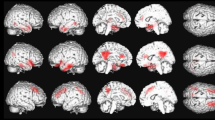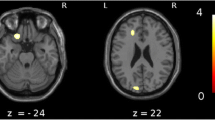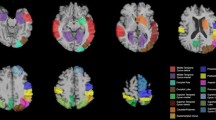Abstract
Although hallucinations in Parkinson’s disease (PD) are not unusual in the long-term treatment with anti-parkinsonian agents, their mechanism is not fully understood. We compared both the neuropsychiatric state and the results of 99mTc-labeled hexamethyl propyleneamine oxime single-photon emission computed tomography in 12 PD patients with medication-induced hallucinations and 21 PD patients without hallucinations. Hallucinatory patients showed significantly lower cerebral blood flow in left temporal regions than nonhallucinatory patients. The cerebral blood flow reduction in these regions may be related to the mechanism of medication-induced hallucinations in PD.
Similar content being viewed by others
Author information
Authors and Affiliations
Additional information
Received: 19 May 1998 Received in revised form: 15 September 1998 Accepted: 26 September 1998
Rights and permissions
About this article
Cite this article
Okada, K., Suyama, N., Oguro, H. et al. Medication-induced hallucination and cerebral blood flow in Parkinson’s disease. J Neurol 246, 365–368 (1999). https://doi.org/10.1007/s004150050364
Issue Date:
DOI: https://doi.org/10.1007/s004150050364




